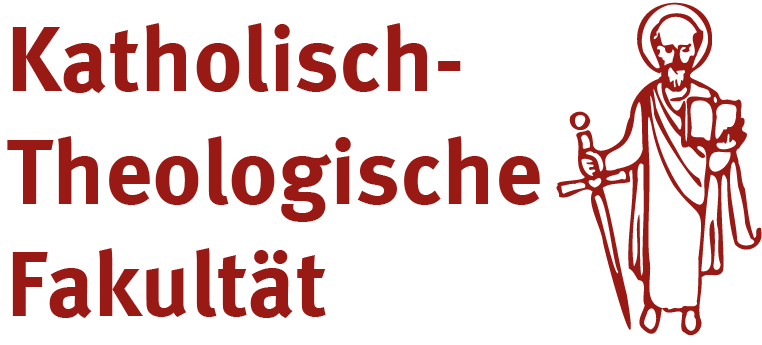“This is a revolution - for our project, too”
** You will find an Italian version below **
Quite unexpectedly, on Thursday, June 23, 2022, the Historical Archives of the Secretariat of State of the Holy See published online thousands of documents from the archives pertaining to the pontificate of Pius XII, which had only been made accessible to researchers in 2020. The so-called “Ebrei” (“Jews”) series primarily contains the requests for help addressed to Pope Pius XII by Jewish people during the Second World War. The project “Asking the Pope for Help” conducted by Prof Hubert Wolf and his team from the University of Münster is also, among others, working on these files, pursuing the aim of making all petitions sent to the Pope, which are kept in the Vatican archives, available to the public in a critical online edition. In the present interview, Wolf comments on the archive’s move and describes which consequences it has for his project.

Certain documents from the Historical Archives of the Secretariat of State can now be accessed online: what does this mean for you and the project “Asking the Pope for Help”?
This is no less less than a revolution – and for our project, too, of course! The announcement was a huge surprise: in the 40 years I have worked there I have never seen the Vatican archives publish documents online, for everyone to use. We are, however, very happy about it, because it significantly simplifies our work. Along with many other series kept in various Vatican archives, the documents from the “Ebrei” series are crucial for our project. This series contains a part of the petitions sent to Pope Pius XII by Jewish people, which we are presenting in our online edition. Now that the documents have been published online, we no longer have to transcribe them in the Vatican by hand or to order them as reproductions. We can simply access them from our desks at home, which is, of course, of great help.
In other archives, such as the German Bundesarchiv, publishing documents online is no longer an unusual practice. Why is this such a special move for the Vatican Archives?
The Vatican archives’ practice has so far differed from that of many other archives. Scholars had no choice but to go to the reading rooms of the archives in order to see the respective files in the original and to transcribe them, if necessary. Until now, the Vatican archives have been rather cautious with regard to the publication of their materials. Being able to digitally retrieve such an enormous number of documents now – probably about 20,000 pages – is a veritable quantum leap. And it is not only us, but also important memorial sites such as Yad Vashem in Jerusalem or the United States Holocaust Memorial Museum in Washington that are interested in the material. However, ordering reproductions of the entire series would be quite expensive. We are therefore grateful that the archive decided to take such a step.
Your project aims to edit the petitions authored by Jewish people and to make them accessible to the public. Does the online publication of the “Ebrei” series make these efforts superfluous?
On the contrary. Our project is just as relevant as it was before the announcement. For several reasons: on the one hand, it is difficult for laypersons to understand the documents without further explanation. The archive has only scanned the original documents and published them online, just as they are kept in this series. Among these documents there are handwritten letters in Italian, Romanian, French and many other languages, which are not always easy to read. Moreover, in many cases certain members of the curia are directly addressed. Someone who lacks the appropriate expertise, however, does not know what exactly this person was responsible for. To ordinary readers, handwritten annotations on the documents also must remain a mystery. For instance, you need to know that a marginal note such as “Ex. Aud. SS.” means that a specific letter was actually presented to the Pope. It is difficult to understand these important processes within the Curia if you don’t have the necessary know-how. This is, however, where our edition comes in: there, handwritten letters will be transcribed and thus made readable by everyone, individuals will be introduced and notes will be transparently explained and systematized. And, of course, we will answer many questions: how many Jews did the Holy See help? Who did it help and who did it not? How did it help? ... A critical edition therefore remains essential to understand these important sources.
And on the other hand?
On the other hand, even this vast body of documents that has now been published online only tells us one part of the story. In the Vatican archives, not all documents are kept in one place. The “Ebrei” series in the Historical Archives of the Secretariat of State by no means contains the material on all “cases” of Jewish people asking the Pope for help, since numerous petitions can also be found in several other series of the Vatican Apostolic Archives, particularly in the “Razza” section of the records of the so-called “Commissione Soccorsi”, but also in the approximately 70 archives of the apostolic nunciatures and delegations. Apart from that, the individual requests for help in the “Ebrei” series are by no means fully documented in all cases. Quite often, many ecclesiastical players were involved in the process and communicated with and sometimes also against each other. The relevant correspondence is therefore kept in different archives. It hence falls short to concentrate on the “Ebrei” series alone.
Can you give us an example?
Certainly. The case of the Jewish commercial agent Georg Meyerstein illustrates the complex situation very well. Most of the documents on his case – we can find one fascicle in Posizione 92 of the “Ebrei” series, which is now accessible online – are kept in the “Razza” section of the “Commissione Soccorsi” and in the archives of the Lisbon nunciature. It is impossible to reconstruct the case by making use of the few pieces kept in the “Ebrei” series alone, nor can Meyerstein’s petition be found there. Only by tracing a case in the files of all Vatican offices and by looking at various collections of sources is it possible to reconstruct a case comprehensively. In Meyerstein’s case we learn that the pope himself was involved. This is, however, not evident from the newly accessible documents kept in the “Ebrei” series. This series provides most important elements for the reconstruction of the fates of Jewish people, but the documents contained there must be linked with information from other archives in order to truly tell the stories of the innumerable Jewish people that turned to the pope during World War II – stories that they themselves tell us with their own authentic voices in the petitions kept in the Vatican archives.

